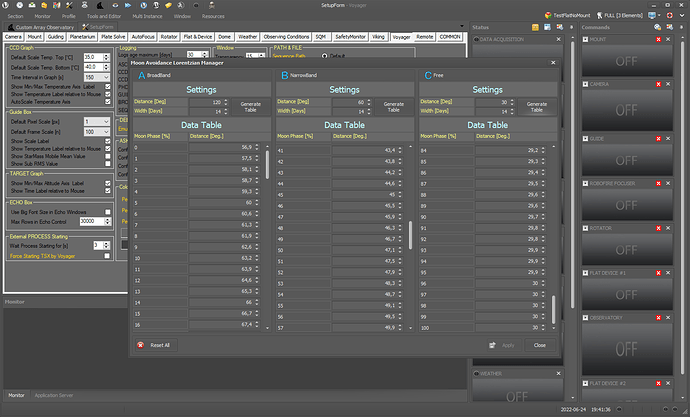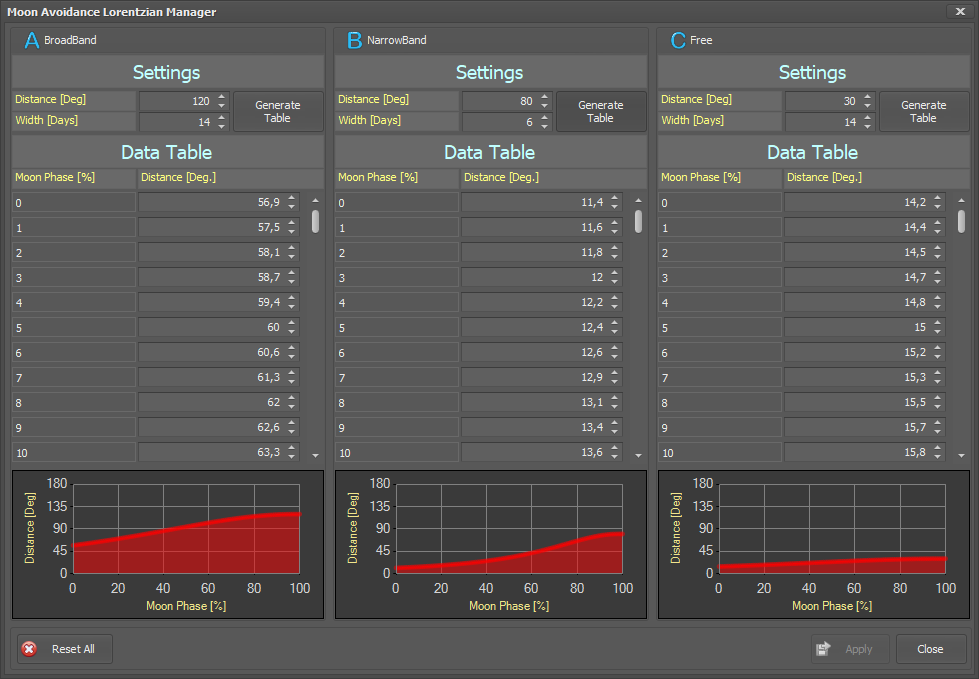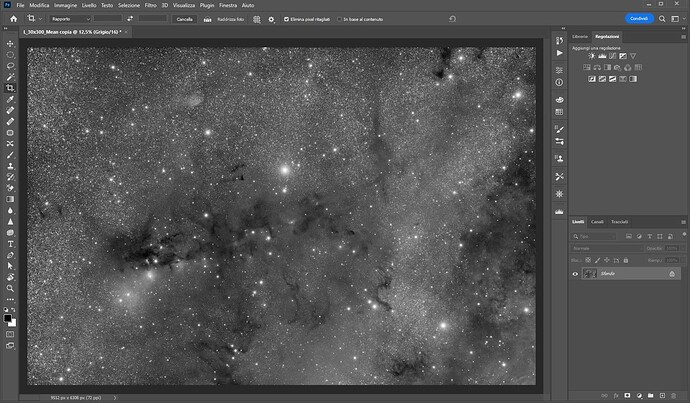New feature incoming …
Wooo, this is incredible, Leo ![]()
This is getting so “Advanced” - excellent job amazing feature.
Leo,
I must admit, I am not able to keep up with the new features and with the data. Since I started using advanced I have built up a huge backlog of raw data.
Voyager Advanced really changed the game.
Cheers,
This is just incredible, Leo. It’s a perfect example of how you take a comprehensive, “clean slate” approach to any problem you try to solve. And even your “beta” implementations have an impressive level of polish.
Best,
Glenn
Thank you so much Glenn, really appreciated your words.
All the best
Leonardo
Hi! any documentation on how to configure the variables? I was looking at Lorentzian Algorithm but to no avail.
Thanks in advance,
Jorge
Features are running in test in 3 different place, tomorrow will be released. Here the RoboTarget Manager with the new constraint. The moon distance and the moon distance lorentzian (also with moon down or flag) will be mutual exclusive:
At now this is the most powerful moon constraints scheduler running . Thanks to who have contribuited with formula, data, opinion and advice . Special thanks to Jon Talbot and Rowland Archer.
Hi Jorge,
Lorentzian is a special function for distribution:
In this case the DIstance parameter is the max value of the function.
The width is the parameter that define the width in this case 14 is the half period of the moon (near it). more is lower more is lower the part of function with high values.
I’ve added 3 custom profile , one for narrow, one for broad and for free to customize. All can be customized. The default value coming from research and test from a lot of users so are ready out of the box to use with success.
All the best
Leonardo
Really, really good Leonardo! ![]()
Now you need to add a Lorentzian for clouds ![]()
Roberto
I second what Glenn said - I throw a challenge to you and you come back with something well beyond my wildest expectations! So great Leo, we are lucky to have you helping us to image. Many thanks!
Rowland
I second everybody - this is incredible. I have just seen the dedicated educational video done by Leo, this is just jaw-dropping. NASA will start looking at your software Leo ![]() (if not already…)
(if not already…)
Hi Leo,
I have been on vacation the last week and just saw the email about the new moon feature. Thank you for implementing this new moon avoidance algorithm. The implementation is incredibly nice as Rowland mentioned well beyond what I thought it would look like. Congratulations.
Jon
Thank to you Jon.
All the best
Leonardo
Just an inquiry - why a lorentzian ? The moon’s brightness is a co-sinusoid. While I haven’t a clue what a glare function actually looks like for an angular distance from a bright object i suspect it’s an exponential function with an offset in the horizon direction to allow for increased scattering from increasing optical depth.
I’m just wondering what it’s aiming at achieving. How do I make best use of it ?
Cheers
Mike
The Moon-Avoidance Lorentzian was formulated by the [Berkeley Automated Imaging Telescope] (BAIT) team.
Moon-Avoidance Lorentzian is for calculating automatically the min distance from the moon of a target to avoid problem of gradient or similar during sequence. Is based on lorentzian distribution and moon phases.
If you think to have better way just write a paper about and do some testing in your own and pubblish the results about.
We will be happy to understand exactly what you means.
All the best
Leonardo
I’m happy now I know where this is coming from and a bit more about what it’s meant to do, thanks.
I shall go away and read the BAIT info.
Regs
Mike
Hi,
One really nice thing about Voyager’s moon avoidance implementation is that you can use your own model. The default is Lorentzian with 2 degrees of freedom but you can test or load your own model easily.
Cheers,



